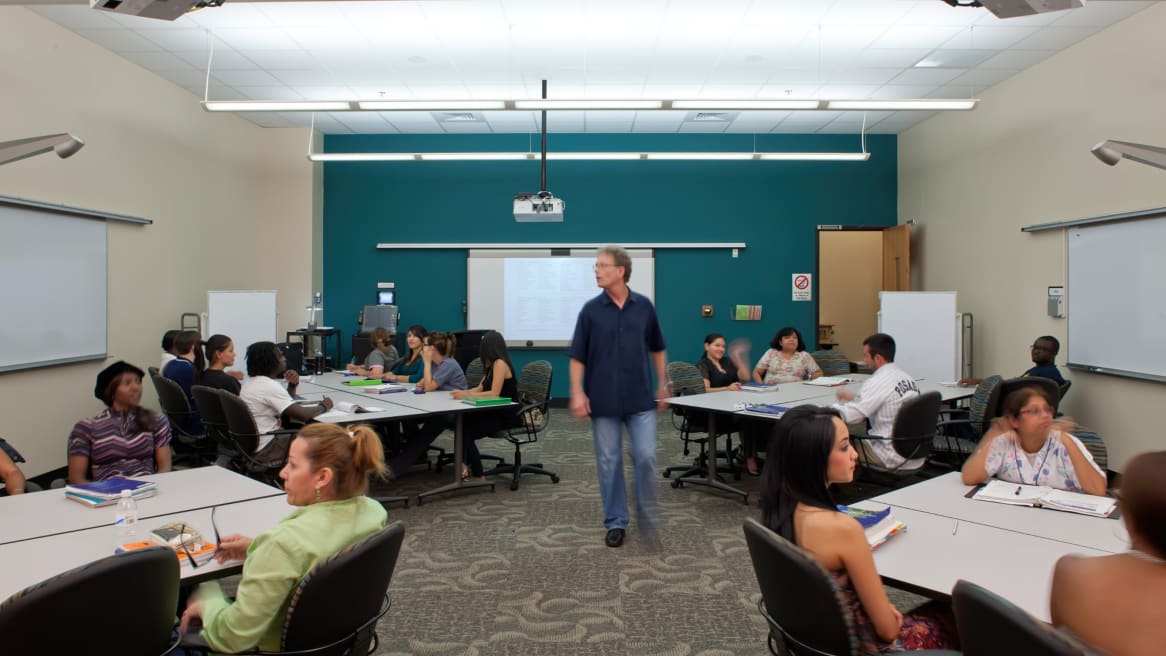Richland College Adds Steelcase LearnLab
Richland visited Steelcase to explore possibilities in innovative classroom design.
Steelcase LearnLab™ Shapes 21st-Century Learning at Richland College
“First we shape our environments, then they shape us.” – Winston Churchill
That insight is proven every day at Richland College, a progressive institution that is the largest of seven colleges in the Dallas County Community College District. Ever since six Steelcase LearnLab classrooms were installed in 2008, they’ve been shaping and supporting innovative teaching methods designed to help Richland students experience learning at its best.
Founded in 1972 and a recognized leader in higher education, Richland is keenly aware of the importance of innovation in leading-edge learning. In 2005 it was the only community college ever to receive the prestigious Malcolm Baldrige National Quality Award. In the same year, Richland also received the Texas Award for Performance Excellence. Today, administrators and faculty continue to build on that legacy of excellence, emphasizing good educational value as a return on investment.
The student body of approximately 20,000 college-credit students and 5,000 continuing-education students is internationally and ethnically diverse, speaking more than 79 first languages.
Richland is keenly aware of the importance of innovation in leading – edge learning.
Dean and executive assistant to the president Janet James explains, “Contemporary learners see their classes as commodities. Students are here because they want to learn. They’re looking down the road and want to be in the workforce or move on to a four-year institution. There are so many educational options out there for them, so they’re picking and choosing, selecting instruction that best relates to the way they learn.”
To help them do so, Richland visited Steelcase to explore possibilities in innovative classroom design. After visiting and seeing LearnLab firsthand, Richland leaders became convinced that this research-based concept for integrating furniture and technology into the classroom space could be an important tool in furthering progressive learning strategies.
4 Key Concepts:
- Triangulation enhances sightlines and provides equal access to content
- Vertical surfaces provide information persistence and maximize display
- Seamless transitions among learning modes maintain cognitive flow
- Square room design and central door access utilize the corners of the room
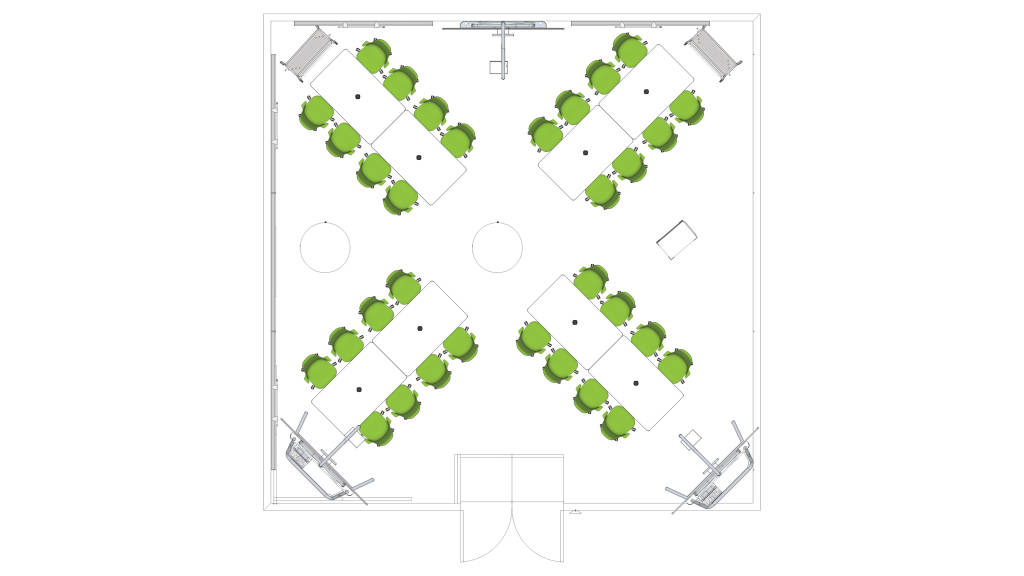
A unique application of Steelcase products, LearnLab is a flexible, tech-enabled classroom that is anything but traditional. Instead of rows of desks facing forward, where the podium is the stage and blackboard the backdrop, LearnLab removes the front of the room by positioning chairs and tables into an “X” configuration.
Electronic media boards are purposefully placed into corners to give everyone front-row sightlines, and portable Huddleboard whiteboards on wall tracks throughout are used to capture and display group work, while keeping information persistent. Professors move about freely during every class period, more often as a coach on the sidelines than the center of attention. This provides the instructor with the entire classroom to teach from, explore and guide as necessary. The spatial arrangement allows the educator to do just-in-time assessment of student work.
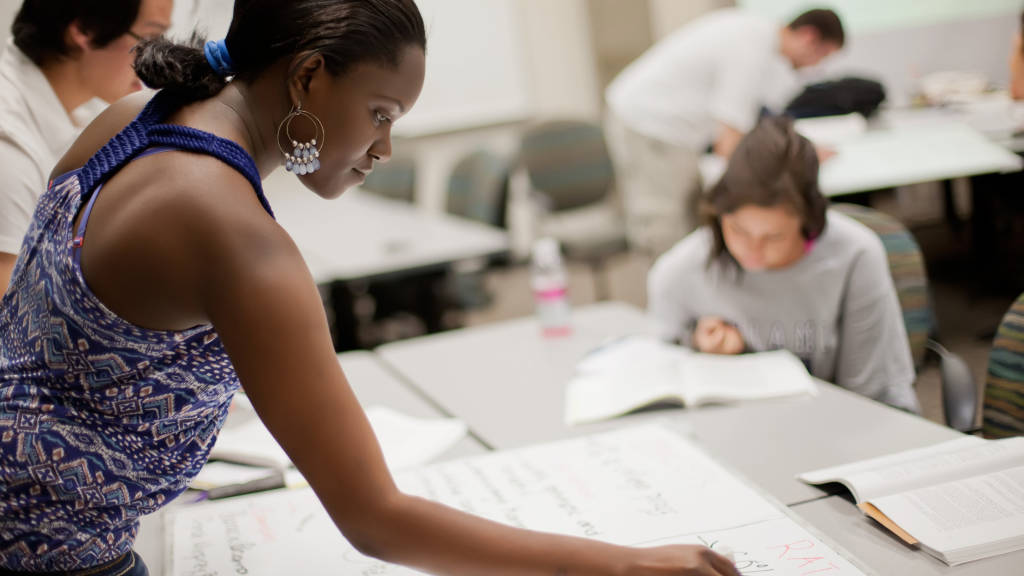
The LearnLab’s pilot research insights, conducted at Steelcase Learning Center, indicated that the design and configuration of furnishings supported four core concepts.
The first is the geometry of space, which includes the triangulation of projection that allows equal access to content, optimized sightlines between students for improved social dynamics, multiple stages for instructors and students, eliminated hierarchy in the classroom and increased student and instructor interactions.
- The second concept was the importance of vertical display to capture and retrieve information for information persistence, and the need to leverage all vertical surfaces in the classroom for maximum display.
- Additionally, the concept of seamless transitions were important as micro movement preserved cognitive flow while transitioning between lecture and collaborative work.
- Finally, a square room design with central door access allows each corner of the room to be utilized.
“The LearnLabs give us the opportunity to use 21st-century methods with 21st-century students. In my opinion, it can be the best space for teaching.”
Dr. Gary G. JohnProfessor, Coordinator EDUC 1300
Solution
“The LearnLab puts learning at the center of what a class is doing,” says James. “They lend themselves to the ease of mobility that’s central to cooperative learning techniques. Students can go from dyads to triads to larger groups, moving about freely. There is no front of the room. Instead, you have the flexibility of a multi- dimensional space.”
“The LearnLabs give us the opportunity to use 21st-century methods with 21st- century students. In my opinion, it can be the best space for teaching,” says Dr. Gary G. John, professor and coordinator of EDUC 1300 instruction. “You can make those rooms sing!”
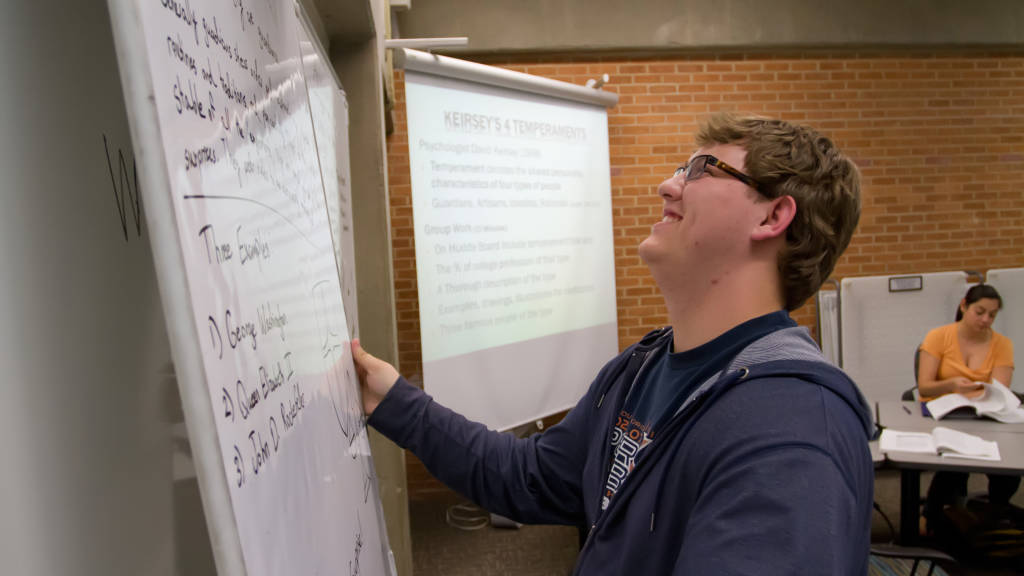
Because Richland’s LearnLabs have proven to be such an asset for good teaching and learning, they’re coveted spaces on campus. Professors want to teach in LearnLabs, and students want to learn in them. To ensure all the potential of the LearnLabs gets engaged, professors must first complete training in cooperative learning techniques as well as how to use the technology in these special classrooms.
“It’s very important to us that our professors get into the total gestalt of the LearnLabs,” says James.
As the result of training and experience, Richland professors who teach in the LearnLabs have become adept at fully engaging the technology. “I may show a document on one screen, a video on another and a PowerPoint on another,” says Ron Stout, professor of EDUC 1300 and human development. “I’ll go back and forth among the three screens, and it really keeps the students engaged. The compre- hension level skyrockets.”
A side benefit of these technology- enhanced classrooms: fewer handouts, which makes learning “greener” and reduces cost. One Richland professor even projects quizzes and sets a time limit for when the screens will “go dark.” As a result, students have an extra- compelling reason to know the material thoroughly; if they don’t, they may not finish on time.
While technology is essential to the LearnLab, low-tech Huddleboards are also highly prized for helping students work in teams.
“I look at Huddleboards as low-tech laptops. You can take them and the information on them with you anywhere,” says Greg Gross, coordinator of technology enhanced learning who also teaches several Richland accounting classes. “When you hang Huddleboards together on the rails, all the learning that was happening in small groups comes together. It’s a simple concept that works really well.”
Uno chairs and Akira tables support easy mobility as well as comfort in Richland’s LearnLabs. With these furnishings, room setups can easily change from an “X” configuration for teamwork to a “boardroom square” for presentations, as well as many other variations.
“Unlike in traditional classrooms where it sometimes seems like the professor is spending a lot of time just trying to manage the movement of the desks, a LearnLab is easy to reconfigure,” says one Richland student completing his first class in a LearnLab. “And I like it that the chairs are very easy on the back. It’s much easier to stay focused when you’re comfortable.”
The research generated evidence at a level of significance favoring the LearnLab classroom on 51 attributes over a standard classroom.
Results
Currently 12 disciplines are taught in Richland’s LearnLabs, encompassing a total of 110 course sections every semester taught by 35 members of the faculty. Evidence indicates the LearnLab supports an active learning educational agenda in these classes.
A 2011 Richland/Steelcase Education Solutions research study involving nearly 800 students produced quantifiable metrics of value. The research compared students taking a course in a LearnLab with those taking the same course in a traditional classroom with row-by-column seating. The students were all freshmen enrolled in the same required course, class sizes were comparable and all faculty members received a certificate in cooperative learning from the University of Minnesota before teaching in the LearnLabs. Measurements were taken in three main categories: environmental, aesthetics and human dimension.
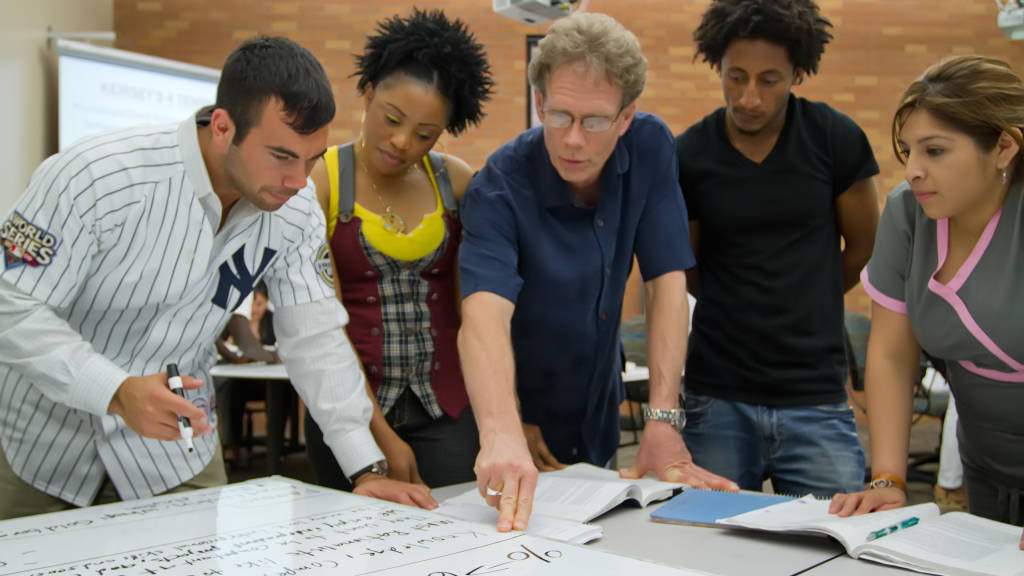
Findings suggest that students prefer the overall classroom environmental aspects (furnishings, equipment and room comfort) and aesthetics (design form, space and color dimensions) of a LearnLab more than the standard classroom setting on attributes such as the ability to increase the level of eye contact and interaction with the instructor and other students.
A level of significance was found favoring the LearnLab’s distinct classroom design attributes (< .0001* prob > F) as a classroom setting over a standard (row-by-column) layout. A summary of the significant attributes included:
- Shape of room (more square) and furnishings (triangulated view planes, swivel seats on chairs, and Huddleboards) provided more support for collaborative and/or co-creation and increased student interactions in team-based work modes.
- Unique furniture layout (“X” configuration of tables) supported comfort, the ability to switch from one teaching mode to another and was easily reconfigurable.
- Technology (interactive whiteboard and three viewing screens) was satisfactory and allowed for all users to share with minimal setup time and with easy access to space and tools.
- Setting was inspirational for learners, reached more learning styles, and was perceived to improve overall learning experiences.
“Whether a class is in a LearnLab wouldn’t be the total catalyst for my decision to enroll in a class, but it would weigh heavily,” says one student. “I know that in a LearnLab I can be more engaged and familiar with other students. We sharpen each other.”
Equally telling, faculty requests to teach in a LearnLab often outnumber availability. “LearnLabs keep the whole learning process really energized,” says Gross.
“LearnLabs are an excellent way of creating community, even in intro classes,” says Kay Coder, professor of sociology. “One student told me he had the best learning experience, it was like the United Nations with no one having the same background, no one having the same religion, government or educational experience, and the students all talked with each other about that. That doesn’t usually happen in a standard classroom.”
Many factors impact learning, as students bring different backgrounds, experiences and abilities into every classroom. At Richland College and other progressive institutions, LearnLabs are proving valuable as a classroom type that supports new ways of teaching and learning strategies, providing preferred learning environments for a broad range of 21st century students.
Credits
Steelcase Education
Richland College
BKM Total Office of Texas LLC
2012


